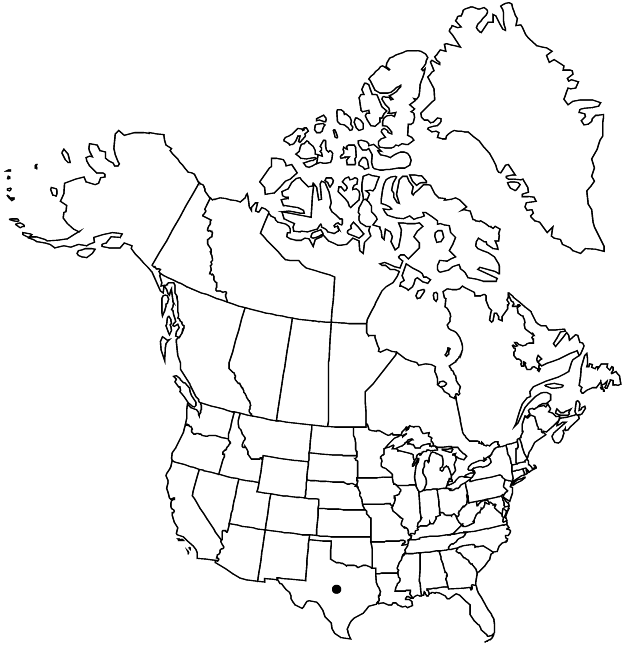Difference between revisions of "Sedum havardii"
in N. L. Britton et al., N. Amer. Fl. 22: 74. 1905 (as havardi),.
FNA>Volume Importer |
imported>Volume Importer |
||
| (One intermediate revision by the same user not shown) | |||
| Line 1: | Line 1: | ||
{{Treatment/ID | {{Treatment/ID | ||
|accepted_name=Sedum havardii | |accepted_name=Sedum havardii | ||
| − | |accepted_authority=Rose | + | |accepted_authority=Rose |
|publications={{Treatment/Publication | |publications={{Treatment/Publication | ||
|title=in N. L. Britton et al., N. Amer. Fl. | |title=in N. L. Britton et al., N. Amer. Fl. | ||
|place=22: 74. 1905 (as havardi), | |place=22: 74. 1905 (as havardi), | ||
| + | }} | ||
| + | |special_status={{Treatment/ID/Special_status | ||
| + | |code=C | ||
| + | |label=Conservation concern | ||
}} | }} | ||
|basionyms= | |basionyms= | ||
| Line 31: | Line 35: | ||
-->{{#Taxon: | -->{{#Taxon: | ||
name=Sedum havardii | name=Sedum havardii | ||
| − | |authority=Rose | + | |authority=Rose |
|rank=species | |rank=species | ||
|parent rank=genus | |parent rank=genus | ||
| Line 44: | Line 48: | ||
|publication title=in N. L. Britton et al., N. Amer. Fl. | |publication title=in N. L. Britton et al., N. Amer. Fl. | ||
|publication year= | |publication year= | ||
| − | |special status= | + | |special status=Conservation concern |
| − | |source xml=https:// | + | |source xml=https://bitbucket.org/aafc-mbb/fna-data-curation/src/2e0870ddd59836b60bcf96646a41e87ea5a5943a/coarse_grained_fna_xml/V8/V8_437.xml |
|genus=Sedum | |genus=Sedum | ||
|species=Sedum havardii | |species=Sedum havardii | ||
Latest revision as of 22:43, 5 November 2020
Herbs or subshrubs, perennial, not tufted, glabrous. Stems procumbent, creeping, or spreading, with ascending or erect branches, (tuberculate), not bearing rosettes. Leaves alternate, (imbricate to subimbricate), erect to spreading, sessile; blade bright green, sometimes glaucous, suboblong to ovate, somewhat flattened to terete, 4–9 × 1–2 mm, base widened, short-spurred, not scarious, apex obtuse, (surfaces smooth or papillose). Flowering shoots erect, simple, 1–5 cm, (papillose); leaf blades elliptic, base short-spurred; offsets not formed. Inflorescences 3-parted cymes, 2–10-flowered or flowers solitary, simple or monochasially 1-branched; branches erect to slightly recurved, not forked; bracts similar to leaves, sometimes imbricate. Pedicels absent or to 1.5 mm. Flowers 5-merous; sepals erect to suberect, distinct basally, green to pinkish, linear or lanceolate, slightly unequal, 3–5 × 0.2–1 mm, apex obtuse; petals spreading, distinct basally, white, suboblong, not carinate, 5–6.5 mm, apex obtuse, shortly mucronate; filaments white to pale pink; anthers red or purplish; nectar scales whitish to pale pink, oblong, (retuse). Carpels divergent or stellately spreading in fruit, distinct, red to purple or stramineous with reddish to purplish striations. 2n = ca. 36–50, 68–72.
Phenology: Flowering spring–fall.
Habitat: Igneous rock outcrops or talus in oak-pinyon woodlands and chaparral
Elevation: 1500-2500 m
Distribution

Tex., Mexico (Coahuila).
Discussion
Of conservation concern.
Selected References
None.